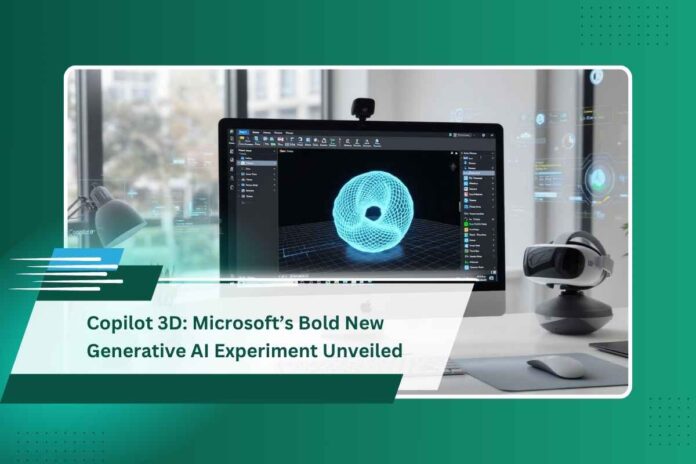In the ever-evolving landscape of artificial intelligence, Microsoft has once again positioned itself at the forefront with Copilot 3D, a creative and experimental leap in generative AI tools. Introduced via Microsoft’s Copilot Labs, Copilot 3D brings 3D model generation to everyday users no lengthy setup, no steep learning curve just an image upload and a spark of imagination.
What Is Copilot 3D and Why It Matters
At its core, Copilot 3D allows users to convert a static JPG or PNG image, under 10 MB, into an interactive 3D model in GLB format. It’s tailored for creative use cases like gaming, animation, 3D printing, VR/AR, design, digital art, or educational projects. Unlike text-prompt–based AI, Copilot 3D is image-first no natural language description needed; just upload, and the AI handles the transformation.
Why does this matter? Because it democratises 3D creation. Whether you’re an educator illustrating concepts, a hobbyist prototyping in VR, or simply exploring AI for fun, Copilot 3D removes technical obstacles and offers an intuitive creative portal.
How Copilot 3D Works and Who Gets Access
Accessible globally to anyone with a personal Microsoft account, Copilot 3D resides in the experimental section known as Copilot Labs. No Pro subscription is required. Users navigate to Copilot.com on their browser, login, head to Labs, and try out Copilot 3D ideally on a desktop browser, though mobile access is available.
Once a conversion runs, the resulting 3D model is saved under “My Creations” for 28 days, giving users time to download and reuse it if desired.
Strengths and Where Copilot 3D Still Stumbles
Early hands-on tests reveal that Copilot 3D shines with inanimate objects such as furniture, bananas, umbrellas, and VR headsets producing accurate, usable 3D models that can easily integrate into AR apps or game engines. Clear separation from background and even lighting helps the AI perform at its best.
However, it struggles with living subjects and complex electronics. Dogs, humans with subtle anatomy, or screens in images often yield distorted or bizarre outputs. Additionally, guardrails are in place to block the transformation of public figures or copyrighted material uploading such images results in refusal to generate a model. Microsoft emphasizes users should only upload images they own or have the rights to use.
Behind the Scenes: Copilot Labs’ Role
Copilot 3D is just one of several creative experiments under Copilot Labs, alongside features such as Copilot Vision and Copilot Actions. Copilot Labs serves as Microsoft’s sandbox for testing next-gen AI capabilities allowing early feedback, iteration, and refinement before broader rollout. Copilot 3D may undergo changes or even be discontinued, depending on user response and technical viability.
On the AI engine side, this release follows Microsoft’s recent rollout of GPT-5 in its Copilot suite, bringing smarter, context-aware responses through Smart Mode. That signals Microsoft’s layered strategy: improving both textual intelligence and creative multimodal output.
What Makes Copilot 3D Stand Out
- Effortless access – No complicated installs, no prior expertise required; a web-based interface for anyone with a Microsoft account.
- Broad creative utility – Supports generative tasks across gaming, design, education, AR/VR, and beyond.
- Inclusive experiment space – Users can explore Copilot Labs and shape the future of AI tools.
- Responsible output – Built-in restrictions ensure privacy and content safety for sensitive or copyrighted inputs.
What’s Next for Copilot 3D?
As an evolving experimental tool, Copilot 3D may expand its capabilities. Future additions could include text-prompted 3D generation, improved handling of complex subjects, or deeper integration with popular design tools like Blender. Whether Microsoft fully launches it or iterates further remains to be seen but its existence reflects a clear push toward creative democratization in the AI era.
Discover more cutting-edge AI innovations and technology insights at ITechinfopro, your go-to hub for expert updates, trends, and future-ready solutions.


